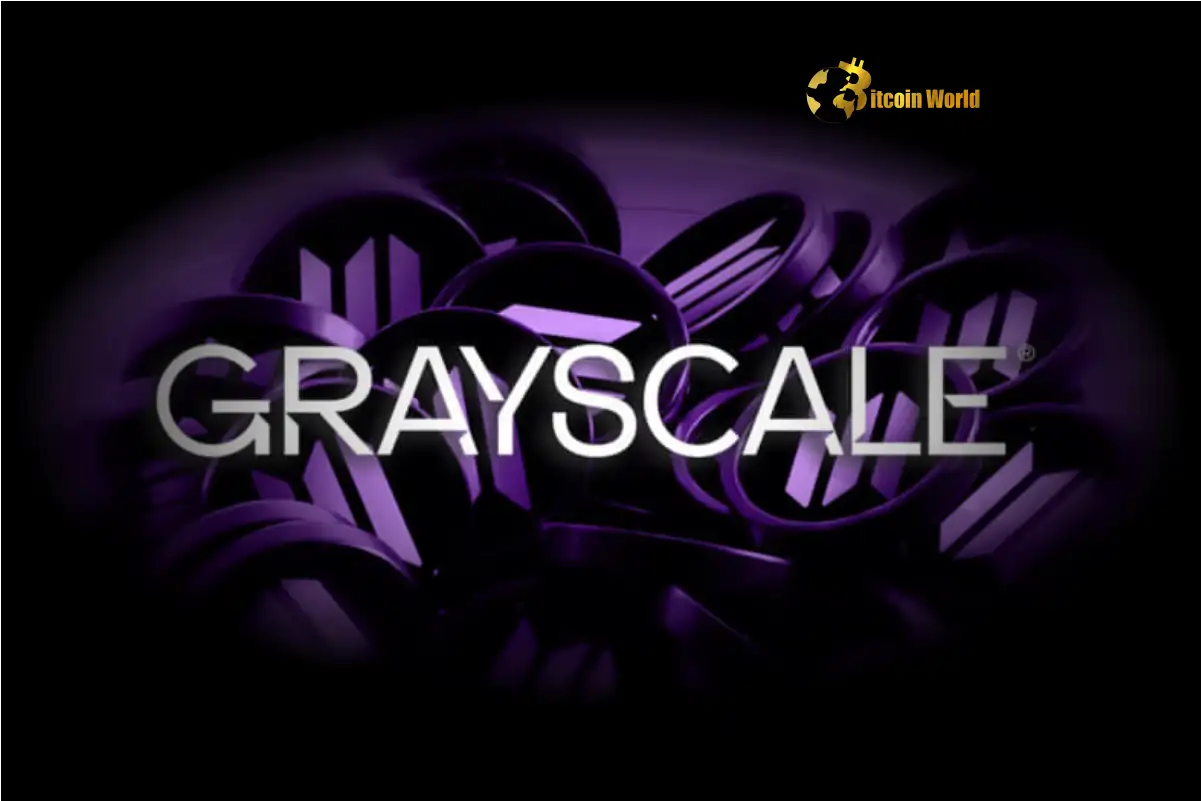Groundbreaking: Grayscale Files for Spot Solana ETF – A New Era for SOL?
0
0

Exciting news is rippling through the crypto sphere! Grayscale Investments, a leading digital asset manager, has just made a significant move that could reshape how investors access Solana (SOL). They’ve officially filed an S-1 registration with the U.S. Securities and Exchange Commission (SEC) to launch a spot Solana ETF. This development, initially spotted by Solid Intel on X, signals a potential turning point for Solana and the broader crypto exchange-traded fund (ETF) market. Let’s dive into what this means for you and the future of crypto investments.
What’s the Buzz About a Solana ETF?
Before we delve deeper, let’s quickly break down what an ETF is and why a Solana ETF is generating so much excitement. An Exchange Traded Fund (ETF) is like a basket of securities that trades on an exchange, much like stocks. In the context of crypto, a spot ETF directly holds the underlying cryptocurrency. For Solana, a spot ETF would hold actual SOL tokens.
Why is this important? Because it offers a regulated and accessible way for traditional investors to gain exposure to Solana without directly purchasing and managing SOL tokens themselves. Think of it as buying shares in a fund that tracks the price of Solana. This simplifies investment, potentially opening the doors to broader adoption and increased capital flow into the Solana ecosystem.
Grayscale’s Bold Move: Paving the Way for Solana Investment?
Grayscale is no stranger to the crypto ETF world. They are, in fact, a powerhouse, managing a substantial portfolio of digital assets. Their decision to file for a Solana ETF is a strong indicator of the growing institutional interest in Solana. Here’s why Grayscale’s filing is noteworthy:
- Validation for Solana: A filing from a major player like Grayscale lends significant legitimacy to Solana as a viable investment asset. It suggests that institutional investors are increasingly recognizing Solana’s potential beyond just a trendy altcoin.
- Increased Accessibility: Grayscale’s ETF could make Solana accessible to a vast pool of investors who are currently hesitant or unable to directly engage with crypto exchanges. This includes investors within traditional brokerage accounts who prefer regulated and familiar investment vehicles.
- Market Expansion: The launch of a Solana ETF could attract substantial capital into the Solana market, potentially driving up demand and price. This influx of funds can fuel further development and innovation within the Solana ecosystem.
Navigating the SEC Landscape: Will the Spot Solana ETF Get the Green Light?
Filing an S-1 is just the first step in a potentially lengthy process. The U.S. SEC has been cautious in approving spot crypto ETFs. While they have recently approved spot Bitcoin ETFs, the path for other cryptocurrencies remains uncertain. Here are some key considerations regarding SEC approval:
- Regulatory Scrutiny: The SEC will rigorously review Grayscale’s filing, focusing on investor protection, market surveillance, and the potential for manipulation in the Solana market.
- Precedent from Bitcoin ETFs: The recent approval of spot Bitcoin ETFs might suggest a more open stance from the SEC towards crypto ETFs in general. However, each cryptocurrency and ETF application is evaluated individually.
- Market Maturity: The SEC will assess the maturity and robustness of the Solana market, including trading volumes, custody solutions, and regulatory compliance within the Solana ecosystem.
- Timeline Uncertainty: The SEC review process can take time, ranging from several months to potentially longer. There’s no guarantee of approval, and even if approved, the timeline remains unpredictable.
Actionable Insight: Keep a close watch on SEC announcements and Grayscale updates regarding the S-1 filing. Market sentiment and Solana’s price may fluctuate based on news related to the ETF approval process.
Why Spot ETFs Matter: The Difference Between Spot and Futures
It’s crucial to understand the difference between a spot ETF and a futures ETF. A spot ETF, like the one Grayscale is proposing for Solana, directly holds the underlying asset – in this case, SOL tokens. In contrast, a futures ETF invests in futures contracts, which are agreements to buy or sell an asset at a future date and price.
Here’s a table summarizing the key differences:
| Feature | Spot ETF | Futures ETF |
|---|---|---|
| Underlying Asset | Directly holds the cryptocurrency (e.g., SOL) | Holds futures contracts of the cryptocurrency |
| Price Tracking | Directly tracks the spot price of the cryptocurrency | Tracks the price of futures contracts, which can deviate from the spot price (due to contango or backwardation) |
| Investor Exposure | Direct exposure to the cryptocurrency’s price movements | Indirect exposure through futures contracts, potential for tracking errors |
| Complexity | Generally simpler to understand | More complex due to futures contracts, roll yields, and contango/backwardation effects |
Spot ETFs are generally preferred by investors seeking direct exposure to the price movements of the underlying cryptocurrency, as they tend to track the asset’s price more accurately and are less complex than futures-based products.
Grayscale’s Crypto ETF Legacy: What Does History Tell Us?
Grayscale has been a pioneer in the crypto investment space. Their track record with crypto products, particularly their Bitcoin Trust (GBTC), offers valuable insights. Grayscale’s experience in navigating the regulatory landscape and managing crypto assets could be advantageous in their pursuit of a crypto ETF for Solana.
However, it’s important to remember that the ETF approval process is not guaranteed. While Grayscale’s reputation and expertise are beneficial, the SEC’s decision will ultimately depend on its assessment of the Solana market and the overall regulatory environment.
Solana’s Price and Ecosystem: What to Expect if the ETF Launches?
The potential launch of a Solana ETF could have significant implications for the price and ecosystem of Solana (SOL). Here are some possible impacts:
- Price Appreciation: Increased demand from ETF inflows could drive up the price of SOL. The anticipation of ETF approval itself might also create positive price momentum.
- Ecosystem Growth: A higher SOL price can attract more developers, projects, and users to the Solana ecosystem, fostering further growth and innovation.
- Increased Liquidity: A Solana ETF can enhance the overall liquidity of SOL by providing an additional avenue for trading and investment.
- Mainstream Adoption: ETF approval can further legitimize Solana in the eyes of mainstream investors and institutions, leading to wider adoption and integration into traditional financial systems.
Are You Ready for a Solana ETF? What’s Next?
Grayscale’s filing for a Solana ETF is undoubtedly a monumental step for Solana and the crypto market. It signals growing institutional acceptance and the potential for wider accessibility to Solana investments. While SEC approval is not guaranteed, the move itself is a testament to Solana’s growing prominence in the digital asset space.
As we await further developments, it’s crucial to stay informed and do your own research. The crypto market is dynamic, and regulatory news can significantly impact asset prices. Keep an eye on official announcements from Grayscale and the SEC to stay ahead of the curve. The journey towards a Solana ETF is just beginning, and it promises to be an exciting one!
To learn more about the latest crypto market trends, explore our article on key developments shaping crypto price action.
0
0
 Manage all your crypto, NFT and DeFi from one place
Manage all your crypto, NFT and DeFi from one placeSecurely connect the portfolio you’re using to start.






